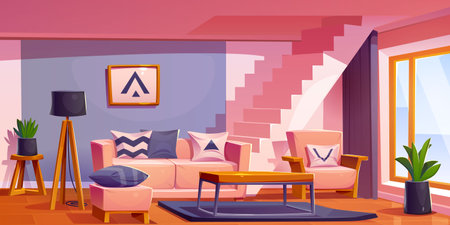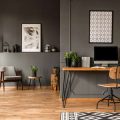1. Understanding the Impact of Natural Light
In American homes, natural light is more than just a design preference—its a key player in shaping daily life. Sunlight streaming through windows can boost your mood, increase productivity, and even help lower energy bills by reducing reliance on artificial lighting. From the sun-soaked bungalows of California to classic brownstones in Brooklyn, how daylight filters into our living spaces defines their overall ambiance. Studies show that exposure to natural light improves well-being, helping to reduce stress and create a welcoming vibe that’s quintessentially American. As you think about maximizing sunlight in your home, consider not just its visual appeal but also its power to influence your comfort, health, and lifestyle.
Assessing Light Sources in Your Space
Before you start rearranging your furniture, it’s crucial to get a clear sense of where the strongest natural light enters your home. Natural light isn’t just a mood booster—it can transform how your space looks and feels. By learning to recognize and map your primary light sources, you set the stage for truly maximizing daylight with smart furniture placement.
Identifying Natural Light Entry Points
Every American home has its own unique blend of architectural features that affect how sunlight streams in. Whether you’re living in a vintage brownstone with bay windows or a sleek apartment sporting modern skylights, understanding these sources is key. Start by walking through each room at different times of day—notice how the sun moves and which areas get bathed in light versus those that stay shadowed.
Classic and Contemporary Light Sources
| Light Source | Description | Common Locations |
|---|---|---|
| Bay Windows | Large window structures that project outward, capturing light from multiple angles. | Living rooms, dining nooks, master bedrooms |
| Skylights | Ceiling-mounted windows that bring direct sunlight into interior spaces. | Kitchens, bathrooms, attics, hallways |
| French Doors | Double glass doors offering both access and abundant daylight. | Dining rooms, patios, home offices |
| Picture Windows | Large, fixed-pane windows designed to frame outdoor views and flood rooms with light. | Living rooms, stairwells, dens |
| Sidelights & Transoms | Narrow vertical or horizontal windows adjacent to doors, increasing entryway brightness. | Entryways, front doors, porches |
Mapping the Sun’s Path for Optimal Placement
Once you’ve identified your main sources of natural light, sketch a quick map of your space noting these spots. Mark out where direct sunlight hits in the morning versus afternoon; this will help you decide where furniture like sofas, reading chairs, or workstations should go to best soak up the rays. Don’t forget—sometimes less obvious places (like a hallway with a high transom window) can be surprisingly bright and worth featuring in your layout plan. Taking this step ensures every piece finds its perfect place in the sun.

3. Choosing the Right Furniture for Light Flow
When it comes to maximizing natural light, your furniture choices can make or break a space. The key is to select pieces that reflect and amplify sunlight rather than absorb or block it. Materials matter: opt for glass, acrylic, or light-toned wood finishes—think ash, maple, or beech. These materials bounce light around the room and keep things feeling airy. For a true American classic vibe, mid-century modern furniture is a smart pick; its sleek lines and raised legs allow sunlight to travel underneath and around each piece, reducing visual clutter and letting that California sunshine (or New York daylight) fill your space.
Color Palette Power
Light, neutral upholstery—ivory, pale gray, or soft tan—works wonders for reflecting light. If you’re after some vintage flair, try pastel tones popular in 1950s ranch homes or the crisp whites seen in minimalist lofts. Avoid bulky dark sofas and heavy drapes; instead, opt for breezy linens or cotton blends that keep the atmosphere bright and welcoming.
Style Tips Across Eras
Beyond mid-century modern, consider Scandinavian-inspired pieces with simple silhouettes and pale finishes, or go for an Art Deco accent chair with metallic legs to catch the afternoon glow. The goal is always the same: let every ray of natural light dance through your living room by choosing thoughtfully designed furniture that enhances—not hides—the sunshine.
4. Optimal Placement Strategies
When it comes to maximizing natural light, strategic furniture placement is your secret weapon. You don’t need a total home makeover—just a few smart moves and some old-fashioned American ingenuity. Picture this: instead of lining up your sofa squarely in front of the window like you’re blocking the stage at a drive-in theater, try shifting it off-center or angling it to keep those rays flowing. Low-profile tables, especially ones with glass tops, let sunlight mosey on through without casting big shadows. If you’ve got bookshelves or storage units, keep them along walls that don’t get direct sun, so you don’t end up shutting out the daylight like a saloon at closing time.
Practical Tips for Letting Sunlight Roam Free
| Furniture Piece | Placement Tip |
|---|---|
| Sofa | Place off-center from windows; angle slightly to create open pathways for sunlight |
| Coffee Table | Choose low-profile or glass-top designs to minimize light blockage |
| Bookshelves | Position against walls away from main light sources |
| Armchairs | Avoid crowding windows; use smaller chairs for flexible arrangements |
Keep Pathways Clear—Cowboy Style!
Think of your living room like an open prairie: sunlight should be able to wander wherever it pleases. Avoid stacking up furniture near windows or piling up decorative items on sills. The goal? Give sunlight the freedom to roam, casting those golden-hour vibes all across your space—no barriers, just wide-open range. So saddle up and let that natural light ride free through every corner of your home.
5. Reflective Surfaces and Accessories
If you’re aiming to maximize natural light in true Americana style, reflective surfaces are your secret weapon. Mirrors are the classic go-to—hang a vintage mirror opposite a sunny window, and you’ll instantly double the daylight dancing through your room. Don’t stop there: glossy accessories like lacquered trays, polished brass candlesticks, or even a retro chrome lamp base work wonders at catching those golden sunbeams and sending them bouncing across your space. For an extra dose of nostalgia, incorporate vintage glass decor—think Depression-era vases, colored glass bottles, or antique suncatchers. These pieces not only sparkle in the sunlight but also add that unmistakable charm of yesteryear. By artfully placing these reflective accents near windows or lighter walls, you amplify every ray, creating a warm, inviting home that feels open and full of life—a true nod to classic American interiors.
6. Seasonal Tweaks and Flexibility
One of the secrets to truly maximizing natural light year-round is embracing seasonal flexibility in your furniture arrangement. As the sun’s position changes from summer’s high arc to winter’s lower path, so does the quality and direction of daylight streaming into your home. Don’t be afraid to give your space a little seasonal refresh! In the spring and summer, consider moving lighter or low-profile furniture closer to windows and sliding away heavier pieces that might block precious rays. When autumn rolls around, you may want to shift seating areas to catch the softer afternoon glow, or rotate accent chairs to follow shifting patterns of sunlight. In winter, pulling cozy reading nooks closer to south-facing windows can help capture every ounce of warmth and brightness on chilly days. The key is to stay flexible—think of your home as a living canvas that evolves with each season. Rearranging rugs, swapping out bulky drapes for sheer curtains, or rotating mirrors can all play a role in adapting to the changing dance of daylight. By tuning into these subtle shifts and adjusting your layout accordingly, you’ll enjoy a fresh, light-filled atmosphere no matter what the weather brings outside.


